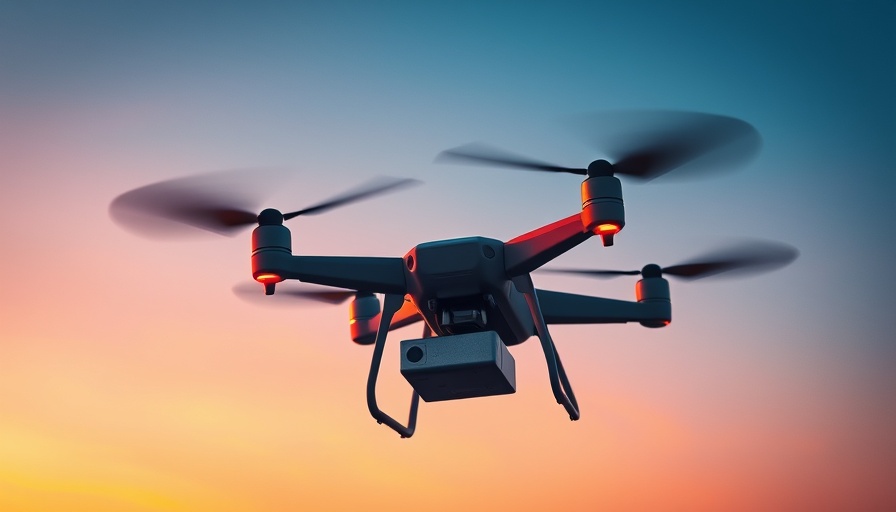
Understanding Trump’s Initiative to Enhance U.S. Drone Manufacturing
On June 6, 2025, President Trump signed a series of executive orders aimed at reinvigorating the U.S. drone manufacturing industry, a sector that has faced significant challenges due to international competition and security concerns. The new orders not only focus on bolstering domestic production but also seek to enhance safety regulations surrounding drone usage. Trump's push comes amid growing anxieties over foreign adversaries, particularly China, capitalizing on the boom in drone technology.
The Growing Concern Over Foreign Domination
The initiatives addressed a key issue: Americans' reliance on foreign drones and technology. Security officials worry that foreign-made drones could be deployed for espionage, potentially leading to critical data breaches at military installations and other sensitive areas. Trump's policy aims to reduce this risk by enhancing the U.S. industry, thereby creating a more secure environment for technology and drone use. As noted in the orders, "Building a strong and secure domestic drone sector is vital to reducing reliance on foreign sources..." This initiative could pave the way for local job creation and innovation in drone technology.
Regulatory Changes to Foster Innovation
Alongside the focus on manufacturing, the executive orders call for revised regulations governing commercial and recreational drone operations. The new rules are intended to establish a clearer path for drone usage while ensuring that safety remains a priority. They come in response to an increasing number of encounters involving drones infringing upon restricted airspace, highlighting the need for robust guidelines as drone popularity surges.
Reviving Supersonic Flight: A Modern Twist
In a noteworthy expansion of the drone industry mandate, Trump also signed legislation intended to revive supersonic commercial flights. By repealing previously imposed restrictions on cross-country supersonic travel, the administration seeks to elevate the U.S. aviation sector's competitiveness. This move could represent a turning point in how Americans view travel, making faster air transit a reality while addressing some of the productive challenges that stringent regulations posed in the past.
Impacts on the U.S. Economy and Workforce
Trump's focus on enhancing the drone manufacturing sector is expected to carry considerable implications for the American economy. By fostering a thriving industry, the initiative may generate new employment opportunities in manufacturing, technology, and beyond. As private companies gear up to respond to increased domestic demand for drones, workforce development programs may become essential to equip American workers with skills relevant to this high-tech sector.
A Call to Parents and Communities
For parents and community leaders across the U.S., contributions towards developing local industries like drone manufacturing could mean safer environments and emerging job prospects for youth. Engaging with local initiatives and discussions regarding technology’s role in society can bolster awareness about such significant developments. By actively participating in community dialogues about these advancements, wider support can be fostered for federal and local initiatives.
The Bigger Picture: Navigating Global Trade and Technology
As we observe the evolution of drone technology and the steps being taken to enhance domestic manufacturing, it’s vital to acknowledge the broader implications on global trade relations. Countries around the world are intensifying their efforts in drone development, seeking to capture markets and establish technological prowess. The U.S. emerging anew as a leader in this space could realign global dynamics in technology and trade.
By understanding the importance of U.S. drone manufacturing and engaging in conversation surrounding it, individuals can contribute to a collective effort that underscores the balance between innovation, safety, and national security. Together, communities can advocate for policies that not only enhance economic growth but also safeguard public interests.
In response to ongoing changes, staying informed about how these developments affect daily life and the economy can empower families to prepare for the future. By tapping into community resources, organizations can help facilitate the transition to a technologically advanced landscape.
 Add Row
Add Row  Add
Add 




 Add Row
Add Row  Add
Add 

Write A Comment